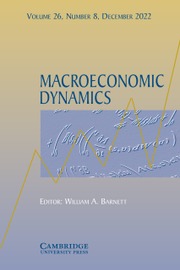No CrossRef data available.
Article contents
High-frequency and heteroskedasticity identification in multicountry models: Revisiting spillovers of monetary shocks
Published online by Cambridge University Press: 31 July 2025
Abstract
We explore the international transmission of monetary policy and central bank information shocks originating from the United States and the euro area. Employing a panel vector autoregression, we use macroeconomic and financial variables across several major economies to address both static and dynamic spillovers. To identify structural shocks, we introduce a novel approach that combines external instruments with heteroskedasticity-based identification and sign restrictions. Our results suggest significant spillovers from European Central Bank and Federal Reserve policies to each other’s economies, global aggregates, and other countries. These effects are more pronounced for central bank information shocks than for pure monetary policy shocks, and the dominance of the US in the global economy is reflected in our findings.
Keywords
Information
- Type
- Articles
- Information
- Copyright
- © The Author(s), 2025. Published by Cambridge University Press

